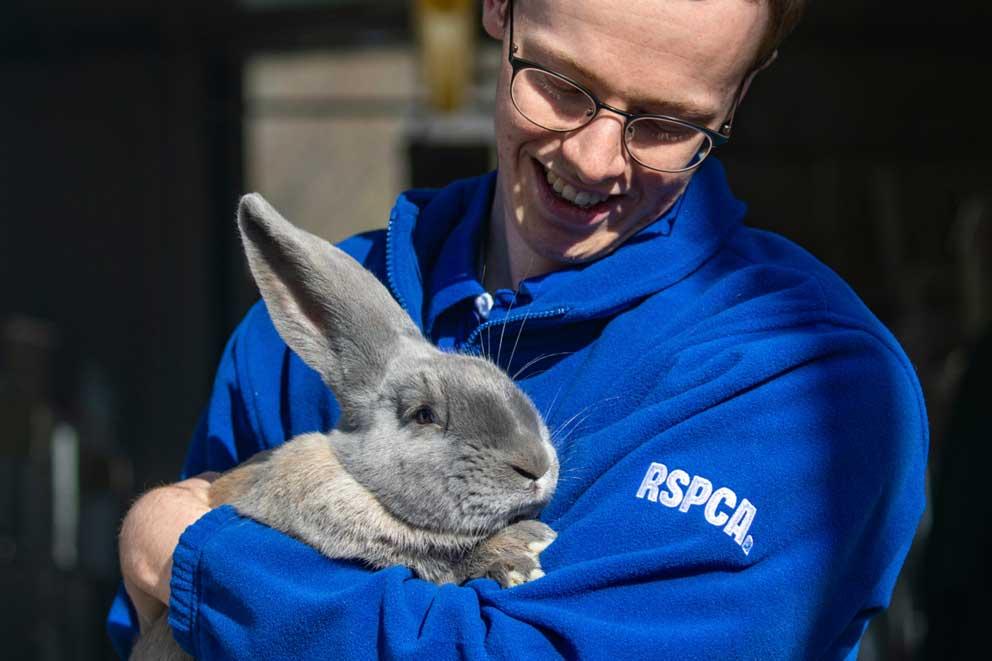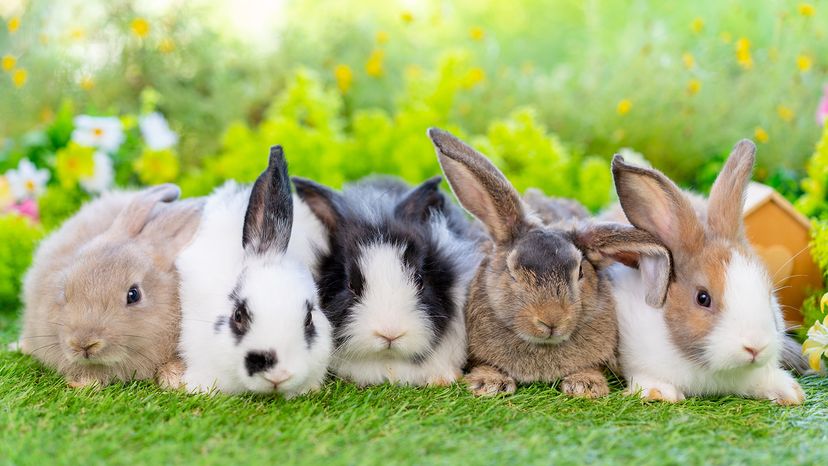Have you ever wondered what makes the rabbit such a special animal? Whether you’re a pet lover, a student, or just curious, understanding the rabbit’s name and what it means can give you a fresh perspective.
This simple animal name holds surprising facts that can change how you see rabbits forever. Keep reading, and you’ll discover interesting details that will make you appreciate these furry creatures even more. Your next favorite animal fact is just a few lines away!
Rabbit Basics
Rabbit have soft fur and long ears. Their eyes are big and round. Most rabbits have strong hind legs for quick jumping. They use their front teeth to chew plants. Rabbits come in many colors like white, brown, and black.
Common breedsinclude the Holland Lop, known for floppy ears. The Flemish Giant is very large. The Netherland Dwarf is small and cute. Each breed has unique sizes and fur types. People keep rabbits as pets or farm animals.
Habitat And Lifestyle
Rabbits live in many different places. In the natural environment, they prefer areas with lots of grass, bushes, and safe hiding spots. They often dig burrowsunderground to protect themselves from predators. These homes keep them warm and safe. Rabbits are mostly active at dawn and dusk, which helps them avoid danger.
In domestic living conditions, rabbits need a clean, quiet, and safe space. They enjoy having room to hop and explore. A cage or pen should be big enough for them to move freely. Soft bedding and fresh water are very important. Rabbits also need toys and things to chew onto keep their teeth healthy.
Diet And Nutrition
Rabbits need fresh haydaily for good health. Hay helps their digestion and teeth. Leafy greens like romaine lettuce, kale, and parsley are also important for vitamins. Fresh water must always be available. Small amounts of pellets can be given, but not too much.
Avoid giving rabbits:
- Chocolate– it is toxic and can harm them.
- Iceberg lettuce– it has little nutrition and can cause diarrhea.
- Onions and garlic– these can make rabbits very sick.
- Fruits in large amounts– too much sugar is bad for rabbits.
- Processed human foods– these are not safe for rabbits at all.
Behavior And Communication
Rabbits live in groups called colonies. They like to be near others for safety. These animals use many sounds and movements to talk. Thumping their back legs means danger is near. They also use soft grunts to show comfort.
Body language is very important for rabbits. Ears move to show feelings. Upright ears mean they are alert. Lying ears back can mean fear or anger. Grooming each other shows trust and friendship.
| Behavior | Meaning |
|---|---|
| Thumping legs | Warning of danger |
| Soft grunts | Feeling calm or happy |
| Ear position | Shows mood and alertness |
| Mutual grooming | Builds trust and bond |
Health And Care
Rabbitscan face some common health problems. Dental issueshappen when their teeth grow too long. This can make eating hard and painful. Ear mitescause itching and discomfort. Watch for head shaking or scratching. Digestive problemsoccur if rabbits eat the wrong food or stress too much. Soft or no droppings can signal trouble. Respiratory infectionsmay cause sneezing and runny nose. Quick vet visits help rabbits feel better fast.
Grooming helps keep rabbits clean and healthy. Brush their fur often to stop mats and hairballs. Long-haired rabbits need brushing every day. Check their nails and trim if too long. Clean ears gently with a soft cloth. Brushing also helps find cuts or lumps early. Regular grooming builds trust and keeps rabbits happy.

Training And Interaction
Litter traininghelps keep your home clean and your rabbit happy. Start by placing a small boxwith soft bedding in a quiet corner. Use rabbit-safe litterlike paper-based or wood pellets. Rabbits often use the same spot, so watch where they go. Reward them with gentle petting or a small treat when they use the box. Be patient. It can take several weeksfor your rabbit to learn.
Building trustis key to a happy relationship. Sit quietly near your rabbit without sudden moves. Speak in a soft voiceto make them calm. Offer treats from your hand to show you are friendly. Let your rabbit come to you first. Gentle petting behind the ears helps your rabbit feel safe. Trust grows with time and care. Be calm and kind every day.
Fun Facts
Rabbitshave unique abilitiesthat help them survive. They can jump highand run very fast. Their strong legs let them escape from danger quickly. Rabbits also have sharp teeththat grow all the time. They use these teeth to chew plants and stay healthy.
Rabbits have big eyeson the sides of their head. This helps them see almost all aroundwithout turning. They can spot predators from far away. Their ears are very long and move to catch sounds. This helps rabbits hear threats early.
Surprising trivia: Rabbits can make many sounds like grunts and squeals. They use these sounds to talk to each other. Also, rabbits have a special wayof cleaning their fur called grooming. This keeps them clean and free from bugs.

Frequently Asked Questions
What Is The Scientific Name Of A Rabbit?
The scientific name for the domestic rabbit is Oryctolagus cuniculus. Wild rabbits belong to the family Leporidae. This name helps in identifying rabbits in scientific studies and wildlife conservation efforts globally.
How Do Rabbits Communicate With Each Other?
Rabbits communicate through body language, sounds, and scent marking. They thump their hind legs to signal danger. Soft noises express contentment, while scent marks establish territory and social hierarchy within groups.
What Are Common Rabbit Species Worldwide?
Common rabbit species include the European rabbit, cottontail rabbits, and snowshoe hares. Each species adapts to different habitats, ranging from forests to grasslands. They all share similar behaviors but differ in size, color, and habitat preferences.
How Long Do Rabbits Typically Live?
Domestic rabbits live between 8 to 12 years with proper care. Wild rabbits usually live 1 to 3 years due to predators. Lifespan depends on diet, environment, and protection from dangers.
Conclusion
Rabbits have many interesting names that reflect their nature. These names help us understand and appreciate rabbits better. Knowing their proper animal name connects us to their world. Rabbits are gentle, fast, and curious creatures. People enjoy learning about them and sharing facts.
Remember, every animal name tells a story about the animal’s life. Keep exploring and discovering more about rabbits and other animals too. They bring joy and teach us about nature’s beauty. Simple names can hold deep meaning and charm.



